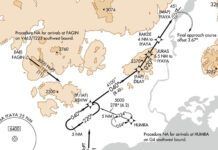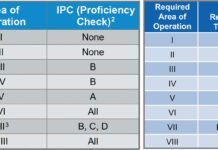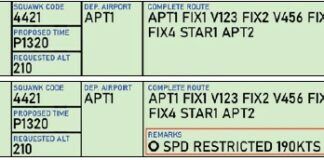Most approaches of the same type, particularly RNAV (GPS) approaches, seem essentially the same. The fixes and the minimums are different, but just about everything else is similar enough to other approaches to give a proficient pilot a “been there, done that” feeling. This thinking can lead us to simply check that the weather is good enough before departure, rather than actually studying the entire procedure before launching.
Examining expected approaches and armchair flying them can often identify some unique challenges. The alternative is discovering the unique challenges while trying to fly the procedure. A great example of some unique procedural challenges can be found on the RNAV (GPS) Y and RNAV (GPS) Z approaches to Runway 02 at Inyokern, California (KIYK).
If there are two approaches of the same type to the same runway, something is probably going to be interesting. In this case, the reason behind two procedures is fairly straightforward, but the implications plus a few other uncommon features, only become clear when the procedures are closely examined.
What’s the Difference?
Alphabetical suffixes are added to procedure names if there is more than one approach to the same runway, using the same navigation. Usually, the approach with the lowest minimums is Z, the next lowest is Y, and so on.
At Inyokern, the Z approach has an MDA of 3160, but Y’s MDA is 4100. They are both LNAVs, so what’s the difference? The missed approach segment of Z penetrates restricted areas close to the airport. Therefore, it has a chart note that says the procedure is not authorized whenever the restricted areas are active.
The Y approach doesn’t have this restriction, but at a different cost. To keep the missed approach from penetrating the restricted areas, the MAP had to move to a point five miles from the airport (BISAC). Since the MDA is typically determined by the vertical descent angle projected from the runway, moving the MAP results in a higher MDA.
Had a pilot only determined that the LNAV MDA of 3160 on the Z approach would get below the clouds, they might be disappointed when they couldn’t be cleared for that approach due to the active restricted areas. However, the Y approach also offers plenty of gotchas.
Runway in Sight?
Relocating the MAP solves the problem of keeping out of the restricted areas, but introduces a new problem of sighting the airport. Since the MAP is located 5 NM from the threshold, the visibility for the procedure would need to be at least 6 SM (5 NM = 5.75 SM, rounded up). This is consistent with the requirements in 14 CFR Part 91.175 for the pilot to have the runway environment in sight in order to descend below the MDA.
A visibility minimum of 6 SM is certainly less than ideal. TERPS allows procedure designers to get around this limitation with a visual flight path after the MAP. On the Y approach, a dashed line is annotated “Fly visual to airport.” This allows the procedure to be published with a lower visibility minimum.
So, if the MAP is 5.75 SM from the runway, with a visibility at the minimum 2 SM (for categories A and B), how can you see the runway? Well, you can’t, but the AIM has you covered: “[t]he annotation ‘Fly visual to airport’ provides relief from [14 CFR] 91.175 requirements that the pilot have distinctly visible and identifiable visual references prior to descent below MDA/DA.”
That means that upon reaching a MAP with a following visual flight path, pilots may continue beyond the MAP without having the runway environment in sight as long as they have the required visibility, remain clear of clouds, and maintain visual contact with the ground. Altitude on the visual portion is up to the pilot, who is responsible for visually avoiding obstacles.
The visual portion between the MAP and the threshold is evaluated for obstacles the same as the final segment between the FAF and the MAP, so pilots will be clear of obstacles as long as they stay at the MDA. However, the obstacle clearance on the missed approach segment is still predicated on the missed approach beginning at the MAP. This is a critical detail for pilots who continue beyond the MAP without the runway in sight.
If the pilot runs into a cloud a few miles past the MAP or otherwise can’t visually acquire the airport, they’re in a pretty bad spot. The published missed approach procedure won’t ensure obstacle clearance when the missed is initiated beyond the MAP. That’s why it’s always a good idea in these cases to have an extraction plan, considering aircraft performance and the locations of terrain and obstructions. It’s not a TERPS guarantee, but it’s probably better than nothing.
Circling NA
Inyokern is near the western edge of the Indian Wells Valley with prevailing winds out of the southwest. The RNAV (GPS) approaches to Runway 02 are the only approaches, so it’s likely that the approaches will need to be flown with a tailwind. With a strong tailwind, it may be necessary to circle to land, but there are numerous restrictions on circling at night.
Between the restriction against circling west of Runways 15 and 02, and against circling to Runways 10, 28, and 33, the challenge becomes a matter of determining where you CAN circle. These restrictions leave Runways 02, 20, and 15 available for landing. You would need to fly a left pattern for Runways 20 and 15, or a right pattern to Runway 02.
Faced with a possible circling maneuver, landing straight-in with a tailwind might be preferable as long as it is within the aircraft limitations. Again, tailwind limitations are something you would want to consider prior to departure, and if circling is necessary, pre-plan the maneuver rather than try to throw it together at the last minute.
Got Weather?
Earlier, we mentioned that published visibility is a requirement to proceed beyond the MAP and fly the visual portion. There’s one small problem with that: there’s no automated weather reporting facility at the airport. China Lake NAWS (NID) is located about 7 NM northeast of Inyokern, and the weather report from there would be helpful, but it’s officially only valid at the airport where the observation was made (except the altimeter setting).
The China Lake weather report and personal observations are all that most pilots will have available. However, local weather observations are required for air carrier operations. Since Inyokern doesn’t have its own automated weather station, air carriers would need to have their own trained weather observers to report conditions to their pilots. That’s why there is the “except for operators with approved weather reporting services…” note. Inyokern had scheduled airline service until late 2013.
That airline considered Inyokern to be a “special qualification” airport, requiring special training for crews operating in and out of the airport. Part 91 pilots have no such requirement to familiarize themselves with the unique challenges of airports like this before launching with the weather at minimums. It might not be required, but it’s an exceedingly good idea.




